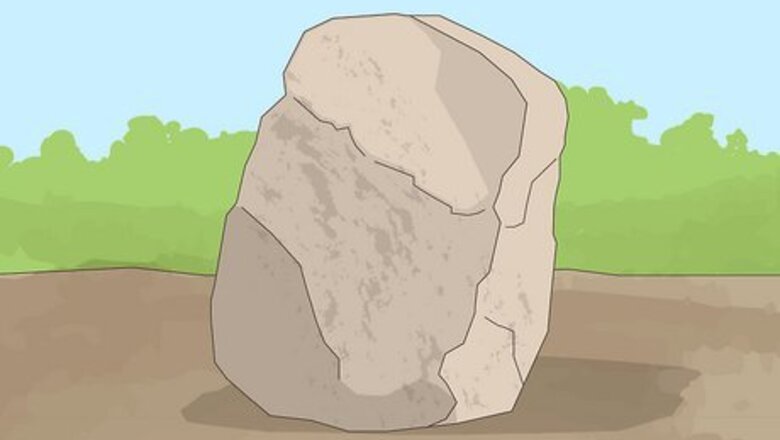
views
Using a Sledgehammer
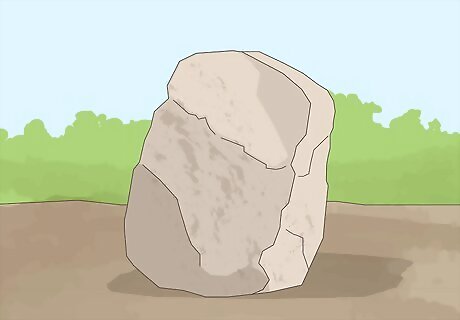
Place the rock onto a flat surface, if possible. If you can manage to move the rock, try and move it so that it's in on a flat surface where it has little chance of moving once you hit it a few times. As a point of safety you should always try and prevent stray pieces of large rock rolling out of your control, such as down a hill where it may pose a danger to others. Before you begin you should also examine your sledgehammer to make sure there are no cracks in the shaft or head. If there are, there's a chance the head may detach, becoming a potential safety hazard.
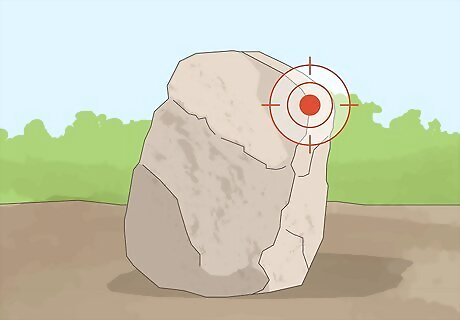
Pick a point on the rock to hit. The key to breaking a rock with a sledgehammer is to apply repeated pressure to a specific point of its surface, forcing it to crack. Pick a spot that is close and you think you can hit multiple times in a row. It doesn't particularly matter whether the spot you choose is flat or rounded, as long as it's a location that you are sure you can hit it several times with little difficulty.
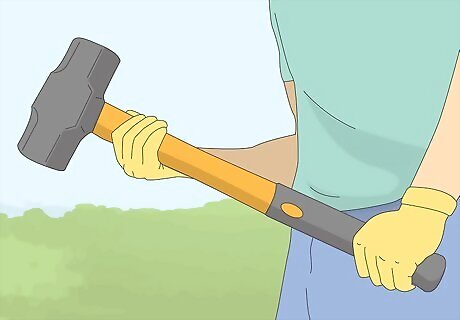
Hold the sledgehammer correctly. Pop culture has generally misinformed us on how to hold a sledgehammer. Make sure to hold the butt end of the sledgehammer shaft with your non-dominant hand and just below the head of the sledgehammer with your dominant hand. This technique ensures maximum safety and control in the swing. Your dominant hand will control the accuracy, your non dominant hand provides balance in the swing and the rest of your body provides the power of the swing.
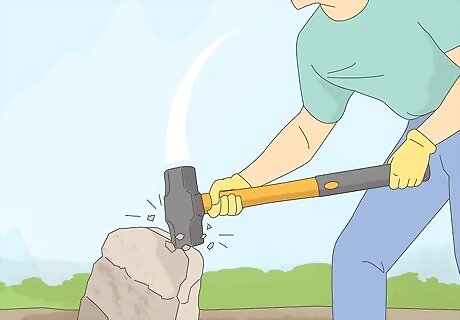
Swing the sledgehammer a full 180 degrees to hit the rock. Starting slow, swing the sledgehammer above your head and down onto the rock using your arms and legs to do the majority of the lifting. Keep hitting the same spot again and again. Eventually, a small fault line will appear on the surface of the rock. Once it does, you are close to breaking it in two. Take a few practice swings with little force to make sure you're confident with the weight of the sledgehammer. Be patient and persistent, there is no set amount of times you'll need to hit it.
Breaking Rocks with a Regular Hammer
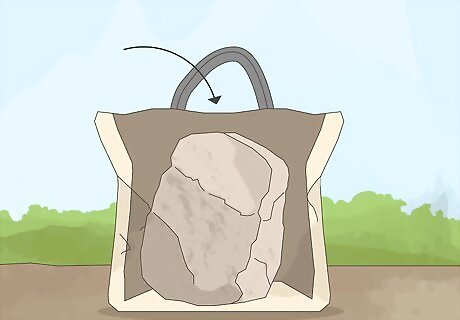
Put the rock inside a heavy canvas bag. If the rock you wish to break is small enough to fit inside a large canvas bag or even a pillowcase, place it in slowly and tie it closed on the open end.
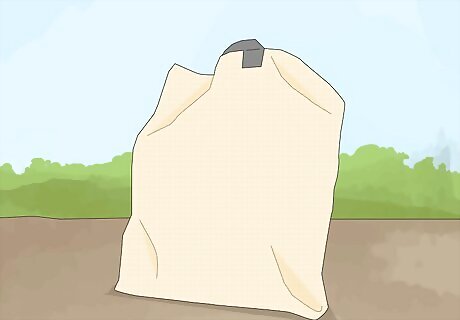
Lay the case with the rock in it onto solid ground. You will be applying strong pressure to the rocks, so you want to be sure that the bag doesn't move around or that you may damage the surface underneath the bag. A garden lawn, gravel or most ground outside is ideal as it is unlikely to be damaged by a hammer.
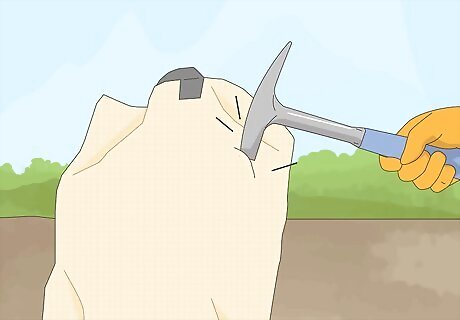
Knock the rock gently with the hammer. Get a feel for where the rock is within the casing and make sure you can visually see it. Practice the swinging motion on the rock with little force to get an idea for what you're going to do.
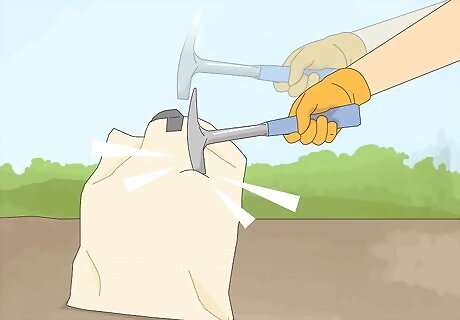
Break the rocks with the hammer by hitting the casing accurately. Bring the hammer down progressively harder onto the covered rock so that it will eventually crack. Don't worry if it doesn't fall apart immediately, it's more important that you consistently hit the same spot repeatedly. If you decide not to use a heavy case or a pillowcase, make sure you are using a specialised rock hammer which is specifically made for this job.
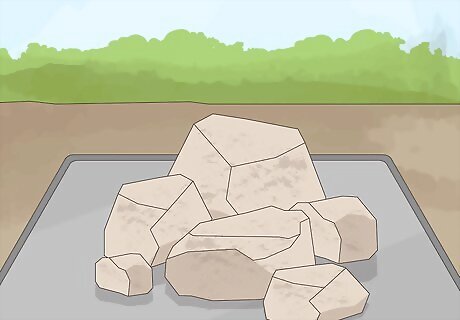
Lay the broken rock onto a tray. Once the rock is broken to a point where you are satisfied, undo the open end of the bag and pour the rock fragments into a tray. Take a deep breath in before you open the bag. There's a strong chance dust will pour out once you tip the case downwards which you want to avoid breathing in. When finished, wash the bag out thoroughly with hot water if you intend to reuse it.
Splitting an Embedded Boulder
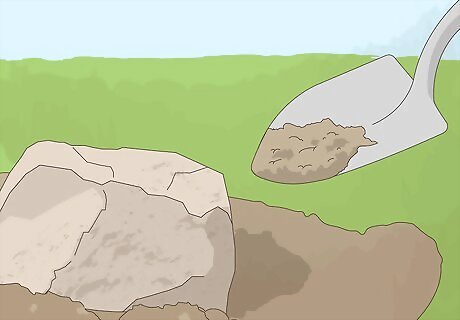
Remove the dirt around the boulder. With a boulder that's embedded within soil, it's important that you have a good idea of how large or small the boulder is. With a shovel, dig away all the dirt around the boulder the expose its general shape and size.
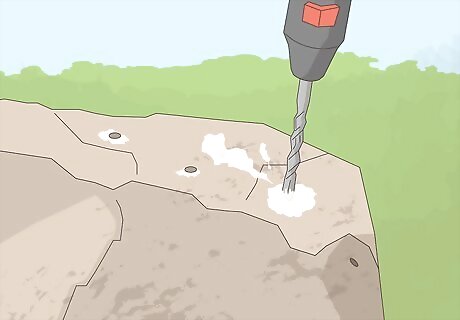
Drill several ⁄2 inch (1.3 cm) diameter holes into the surface of the rock and remove dust. While wearing goggles, drill a series of evenly spaced holes across the surface of the rock. Then, use a bulb-type syringe to remove the excess dust within the small holes.
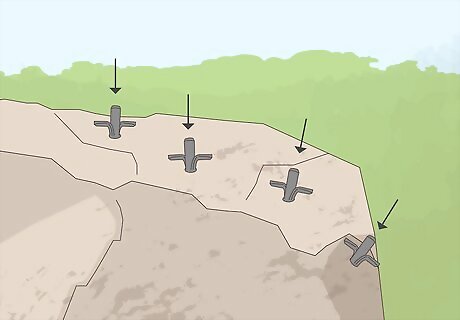
Drive the chisel and feathers into the holes. Ease a chisel into each drilled hole with two 'feathers' on either side that will help insert it. Use a small hammer to lightly tap on the top of the chisel to make sure that it's firmly implanted in the rock.
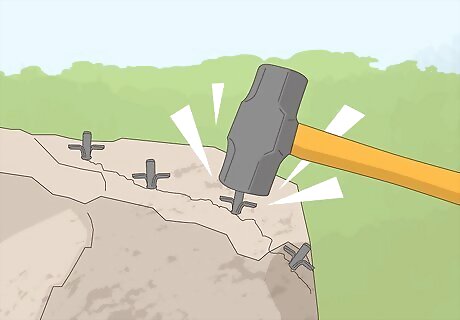
Hammer on the chisels to break the rock. Depending on the size of the rock, use a hammer or sledgehammer to hammer in the chisels into their respective holes, alternating between them on each swing. After a while, a large crack should appear within the rock.
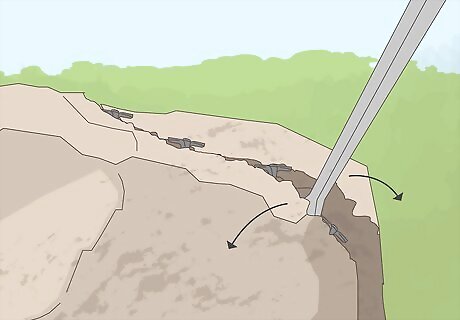
Pry open the rock with a crowbar. Using a long crowbar, jam the slanted edge into one of the fissures and pry the rock apart to speed up the process. The rock may not pry apart on the first attempt. If you need to, try hammering in the chisels a little further to increase the fracturing of the rock then try prying it open again.




















Comments
0 comment